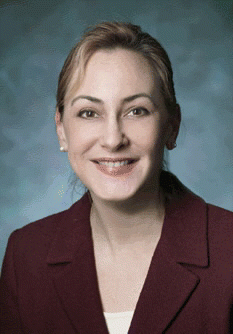Among the 14 patients who had positive PET-CT findings but no tumor, it was found that five patients had extensive necrosis, and either a histiocytic response or foreign body giant cell reaction was found in nine patients. Of the eight patients in whom PET-CT and pathology studies were both negative for tumors, three patients were found to have radiation fibrosis, and five had a foreign body reaction with giant cells and cholesterol debris.
Explore This Issue
September 2009Overall, the sensitivity and specificity of PET-CT in predicting occult nodal disease was 60% and 36% respectively, Dr. Gourin said, with a positive predictive value of 30%, and a negative predictive value of 67%. PET-CT performed within three months of treatment did not correlate with pathologic findings.
Researchers also took into account the standard uptake value (SUV) of PET and how this may have related to findings. SUV levels show how active cells are in terms of utilizing the FDG contrast material; however, both nonviable tumor cells and areas where inflammation is occurring show increased SUV, which can increase the false positives from PET imaging when PET-CT is performed too early, she said.
 The efficacy of PET-CT in predicting residual nodal disease after chemoradiation, and thus the need for posttreatment neck dissection, appears dependent on the timing of imaging after chemoradiation.
The efficacy of PET-CT in predicting residual nodal disease after chemoradiation, and thus the need for posttreatment neck dissection, appears dependent on the timing of imaging after chemoradiation.-Christine Gourin, MD
Timing of PET-CT Also a Factor
Whether post-treatment neck dissection should be used in HNSCC with advanced disease is controversial because not all patients have residual occult disease. But if surgery is to be performed after chemoradiation, evidence suggests that the safest window is four to 12 weeks after chemoradiation. Unfortunately, this window corresponds to a time when PET-CT has a lower accuracy-studies show that performing the imaging later, at about 12 weeks after inflammation has been reduced and there may be an increase in tumor size, is associated with greater accuracy, she said.
Deferring early post-treatment neck dissection in patients without residual adenopathy in favor of obtaining PET-CT imaging in 12 weeks, or later, following chemoradiation may be a viable approach to help reduce the number of unnecessary neck dissections, Dr. Gourin said.
The regional recurrence rate after planned neck dissection was 6%, which is similar to rates reported for patients with a complete response who are observed with serial negative PET-CT imaging. Overall, our data suggest that not all residual viable tumors in post-treatment neck dissections are viable and that the timing of PET-CT should influence the decision to proceed with neck dissection, not the other way around, she said.
Another Opinion
Another take on the subject came from Cherie Ryoo, MD, a fourth-year resident in otolaryngology-head and neck surgery at Ohio State University, who presented findings from a retrospective study of 243 head and neck cancer patients who had a diagnosis of upper aerodigestive tract squamous cell cancer. Data were collected for patients who were treated from January 2005 to December 2007.
Leave a Reply